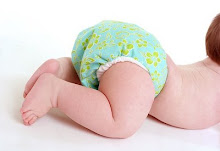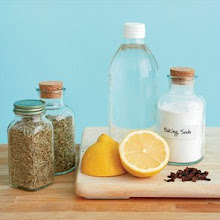Part 1 HERE-Exposing the Myths (sanitation)
Part 2 HERE- Exposing the Myths (ease of use)
Part 3 HERE- Exposing the Myths (cost)
Part 4 HERE- Cloth Diaper Benefits (health, environment)
Part 5 HERE- More Benefits (potty training, and more)
Part 6 HERE -Basic info and terminology
Part 7 HERE- Building your cloth diaper stash
Part 8 HERE- Diaper Needs Questionnaire
 So now that you have the info on all the different types of cloth diapers, you're probably asking yourself why you even thought about doing it. It can be overwhelming, I know. But I want to give you something I found right before making my first diaper purchase and hopefully it will help you as much as it did me. It was from an Australian website (I wish I could remember which one), so I've modified it a bit to work with our terminology in the states. It's a questionnaire that will clarify which diapers will serve your needs best, so that you have a positive diapering experience. Fun Fact: In Australia, cloth diapers are called Nappies.
So now that you have the info on all the different types of cloth diapers, you're probably asking yourself why you even thought about doing it. It can be overwhelming, I know. But I want to give you something I found right before making my first diaper purchase and hopefully it will help you as much as it did me. It was from an Australian website (I wish I could remember which one), so I've modified it a bit to work with our terminology in the states. It's a questionnaire that will clarify which diapers will serve your needs best, so that you have a positive diapering experience. Fun Fact: In Australia, cloth diapers are called Nappies. What aspect of cloth diapering is most important to you?
The environmental impact and natural fibers next to baby's skin?--All cloth diapers are better for the environment compared to disposables and are much healthier for baby. However, to really take advantage of the environmental benefits you may consider organic, unbleached prefolds, or trim cotton fitteds (like Mother-ease). In addition to cutting down on chemical processing of the hemp or cotton fibers, they dry quickly on the line so you can rest assured that you save quite a bit of energy (and money!).
Cost?--Again, all cloth diapers are going to save you a lot of money. Even if you decide to go with the Cadillac of diaper systems, you will still save $500-$1200. However, to maximize this benefit, going with an economical stash comprised mainly of flatfolds, homemade fitteds, or onesize diapers are all great ways to stretch your dollar. Flatfolds price between $1.50-$2 and save you on energy when line dried. Onesize diapers are great because they adjust to fit your child all through the diapering years so you maximize your investment. While All-in-ones (AIO) are more trim and (some say) more convenient (no stuffing required--the most like a disposable)--they also take much longer to dry. At the same time, they are sized (s,m,l) so you will need to have a complete stash of each size which does raise costs a bit. However, while it may be more expensive initially (having an entire stash of each size)-- a family cloth diapering several children over the years can benefit from diapers with less wear due to the separate sizing.
Designs and Fashion?--There is no doubt that cloth diapers are always going to be better looking than disposables. Go ahead. Make those 'sposie moms jealous. With all kinds of prints and patterns on Covers, and diapers--you can make them your favorite fashion accessories.
How do you plan to dry your diapers? If your plans are to machine dry them, you have a lot of flexibility with what diapers you choose. If you are looking to use a clothesline or a drying rack indoors, you may think about buying pocket diapers, Flatfolds or Prefolds or pocket diapers. With pocket diapers, you remove the stuffing for laundering and drying. This allows for a quicker dry period than say Fitted diapers or All-in-ones which are thicker and therefore have a longer dry time.
Is your partner supportive of using cloth diapers? I can tell you from experience that in the beginning, the learning curve can feel a little scary. It is obviously not the social norm to cloth diaper, and there may be a few "mistakes" while you figure out how to make cloth work for you and your family. If your partner is not supportive and encouraging during these moments, it can be really easy to give up solely to avoid the initial discomfort. But if you can convey to your partner how important it is to have their positive energy to draw from, even if they don't understand why you are doing it, it makes for a MUCH more fulfilling experience. I have known 3 other couples who wanted to cloth diaper (one was the husband!). The only one who quit was the one who didn't have that encouragement from the spouse. It makes a difference. If you know you will need help changing diapers from your partner, parent or babysitter, and they seem on the fence about it--try having a few pocket or all-in-ones around just for them (so they know it is just as easy as disposables). They'll get on board. Real men change cloth diapers--that's what I say: )
I hope this series has been helpful for you. Feel free to send me questions or insights you may have about cloth diapering and natural parenting in general. I'll continue posting things as they come. Next week, Info on BPA, an EC post, and easy diaper laundering techniques and tips.
Have a great weekend!



























1 comment:
That totally makes sense. Thank you. Your blog has been the best info I have read on cloth diapering. U rock!
Post a Comment